Hydration is often spoken about in simple terms: drink more water, use a hydrating serum, apply a moisturiser. But beneath the simplicity lies one of the most complex and essential processes in skin biology. Water is not just something the skin needs; it is the foundation of its vitality. Every movement, repair, and renewal within the skin depends on it.
Yet water alone is never enough.
To truly understand what keeps skin supple and radiant, we need to look at the relationship between hydration: the water content within the skin, and moisture: the lipids that lock that water in.
Hydration vs. Moisture: Two Sides of the Same Equation
Hydration refers to the skin’s internal water levels. Humectants like hyaluronic acid and polyglutamic acid attract and bind water within the upper layers of the epidermis, helping cells remain plump and elastic. But if that water isn’t sealed in, it quickly evaporates through a process known as trans-epidermal water loss (TEWL).
That’s where moisture comes in. Moisture is provided by lipids, the natural fats that form the skin’s protective barrier. Ceramides, cholesterol, and fatty acids act as a seal, preventing the escape of water and keeping the surface smooth and soft.
Without this lipid shield, the skin becomes like a sponge left in the sun: briefly full, then rapidly dry. Many skincare products focus almost exclusively on humectants, delivering hydration but failing to secure it. The result is temporary plumpness that fades within hours.
True hydration is a symphony of water held by humectants and protected by lipids. Both are essential, and neither works without the other.
Restoring the Balance with Intelligent Lipid Science
EXOGLO approaches hydration as a layered system. It begins by replenishing water content through powerful humectants like Tremella Fuciformis polysaccharides and polyglutamic acid, which attract and retain moisture within the epidermis.
Then, it fortifies the lipid barrier with phosphatidylcholine, ceramides, and phytosphingosine — bioidentical lipids that mirror the skin’s natural composition. This lipid matrix forms a breathable seal that reduces trans-epidermal water loss and strengthens the skin’s structural integrity.
The result is not just hydrated skin, but hydration that lasts. The kind of hydration that transforms texture, tone, and overall vitality.
Hydration as Communication
Beyond comfort and glow, hydration is also the medium through which the skin’s cells communicate. When water balance and lipid structure are optimised, the skin’s microenvironment stabilises. Nutrients move more efficiently, and the delivery of active ingredients, including exosomes and stem cell-derived factors, becomes more effective.
It’s not just about moisture; it’s about restoring harmony to the biological processes that define healthy-looking skin.
The Aesthetics of True Hydration
When the relationship between water and lipids is in balance, skin behaves differently. It reflects light more evenly, feels more resilient, and appears visibly renewed. This balance is what gives EXOGLO-treated skin its signature luminosity; not from surface sheen, but from structural integrity and internal hydration.
The Evolutionary Perspective
In nature, everything that endures adapts by maintaining balance and the skin is no exception. By blending humectants that draw in water with lipids that retain it, EXOGLO restores the essential rhythm between hydration and moisture.
True hydration isn’t about how much water your skin can hold, it’s about how well it can keep it.
By MESCH Journal



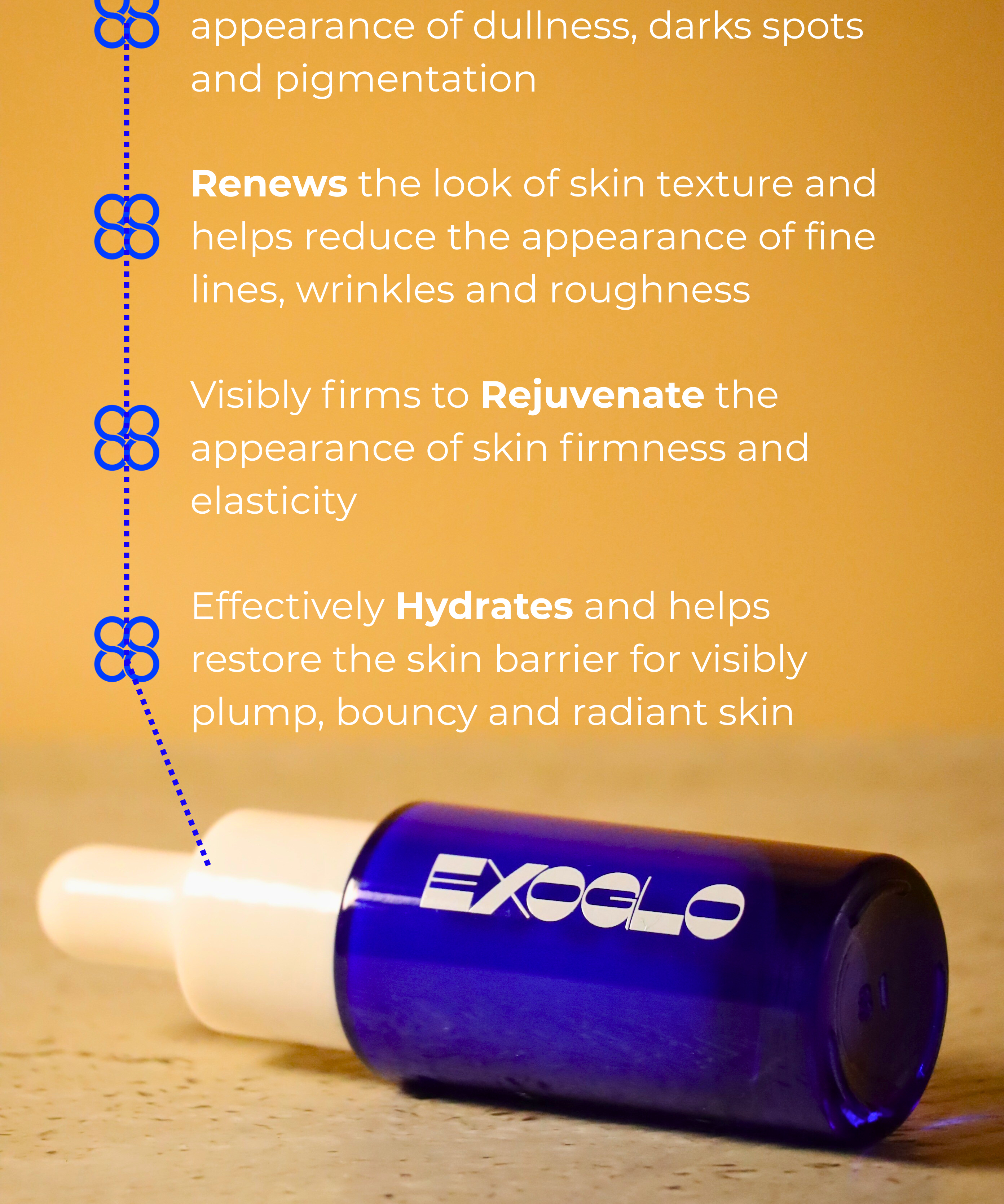
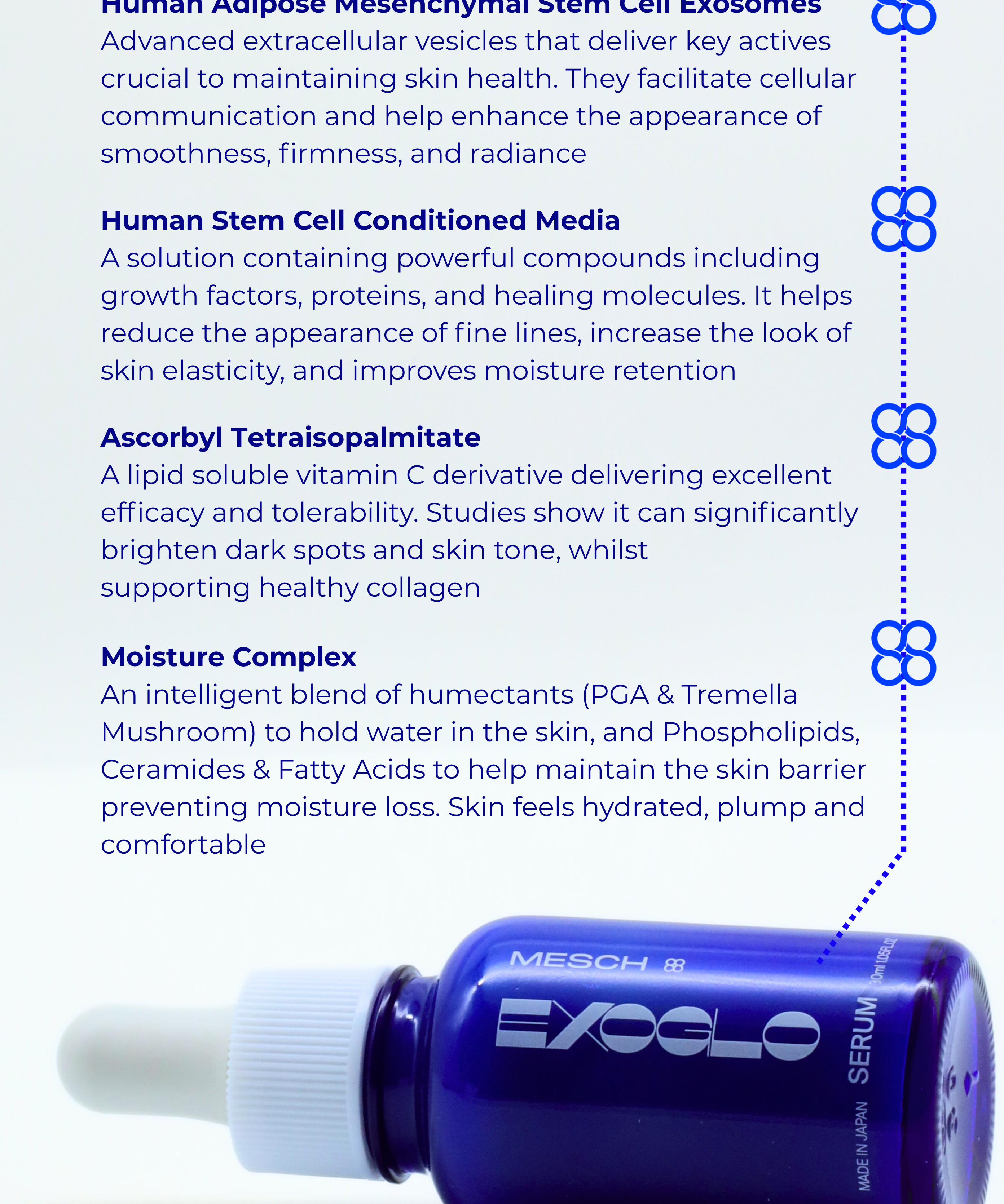
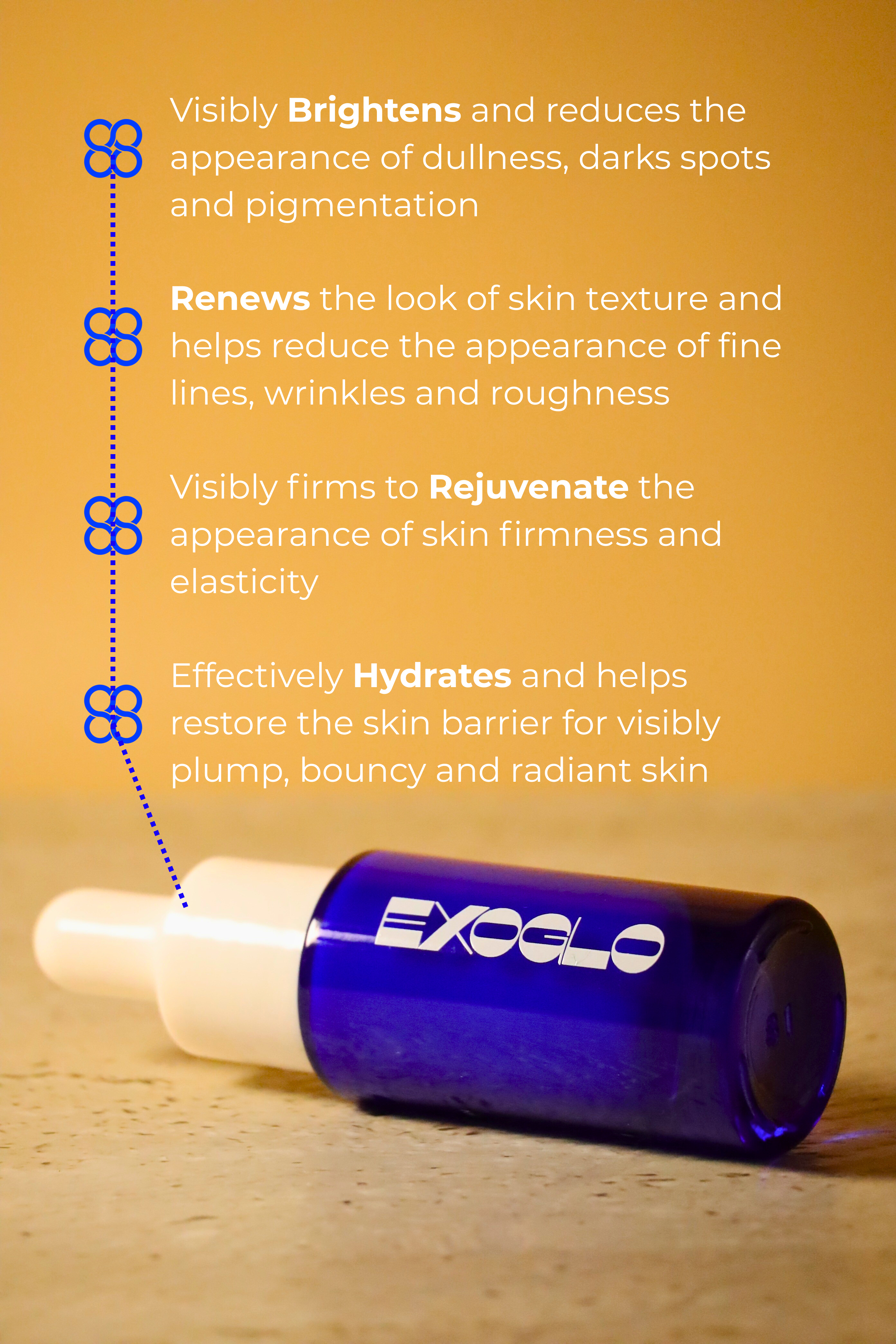

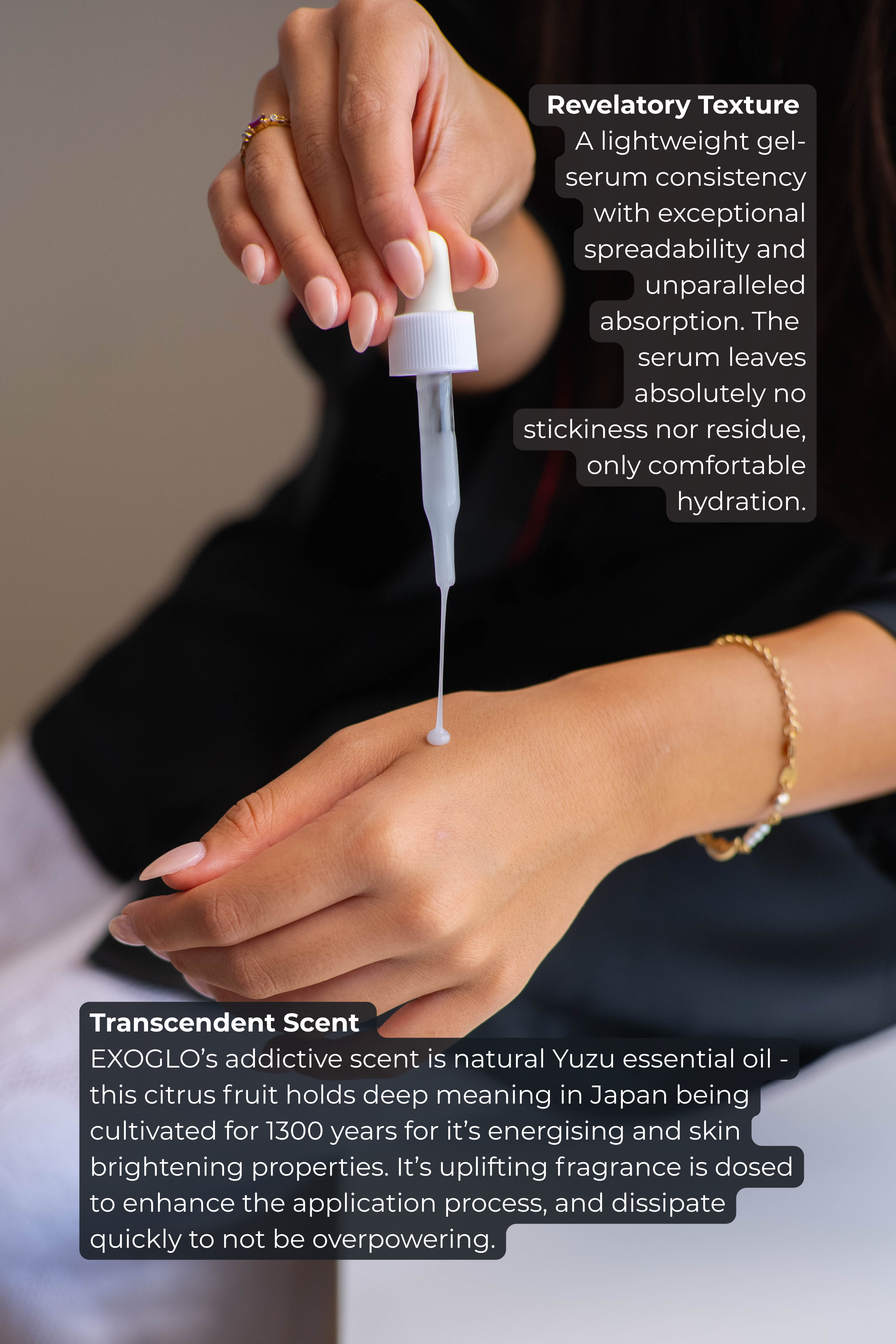
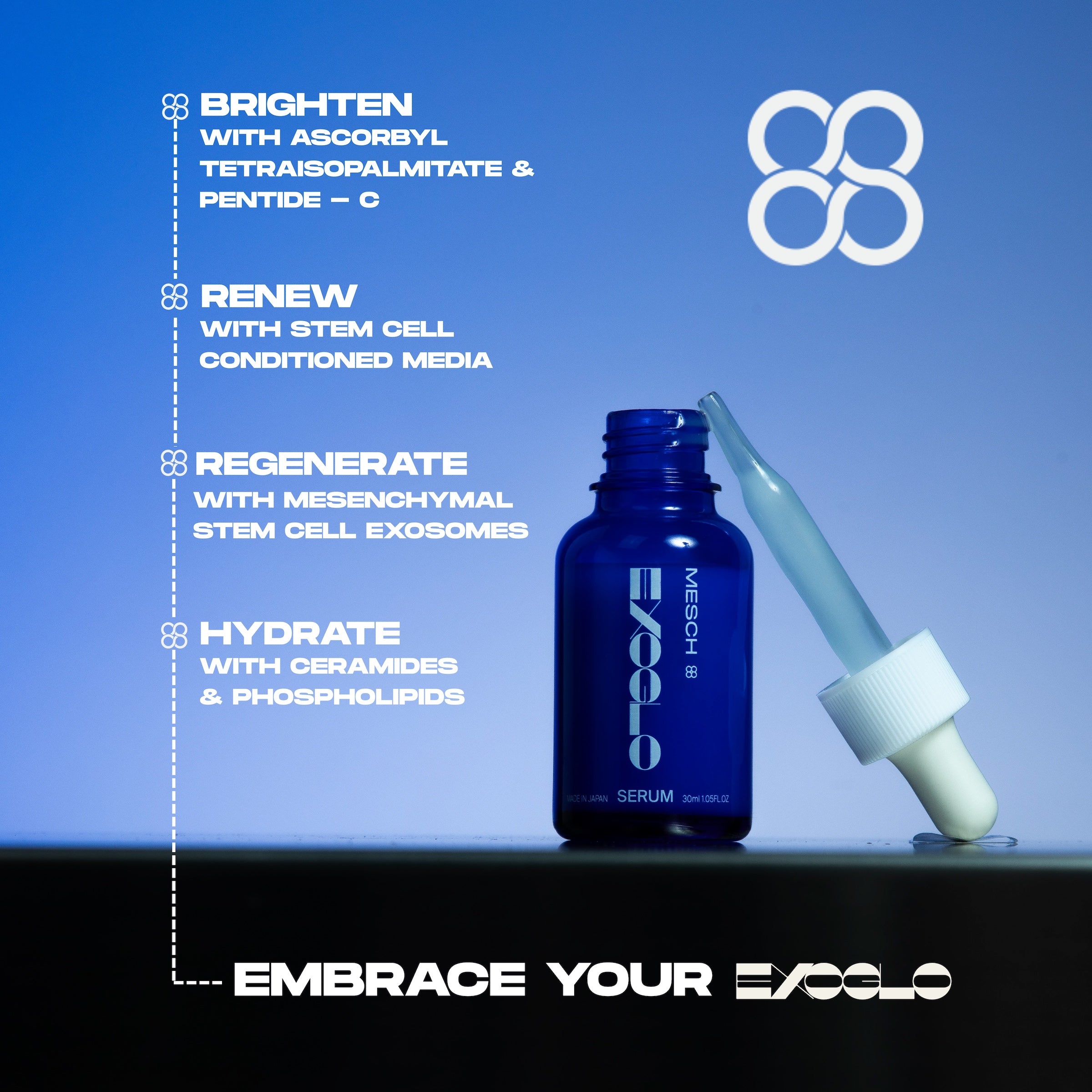
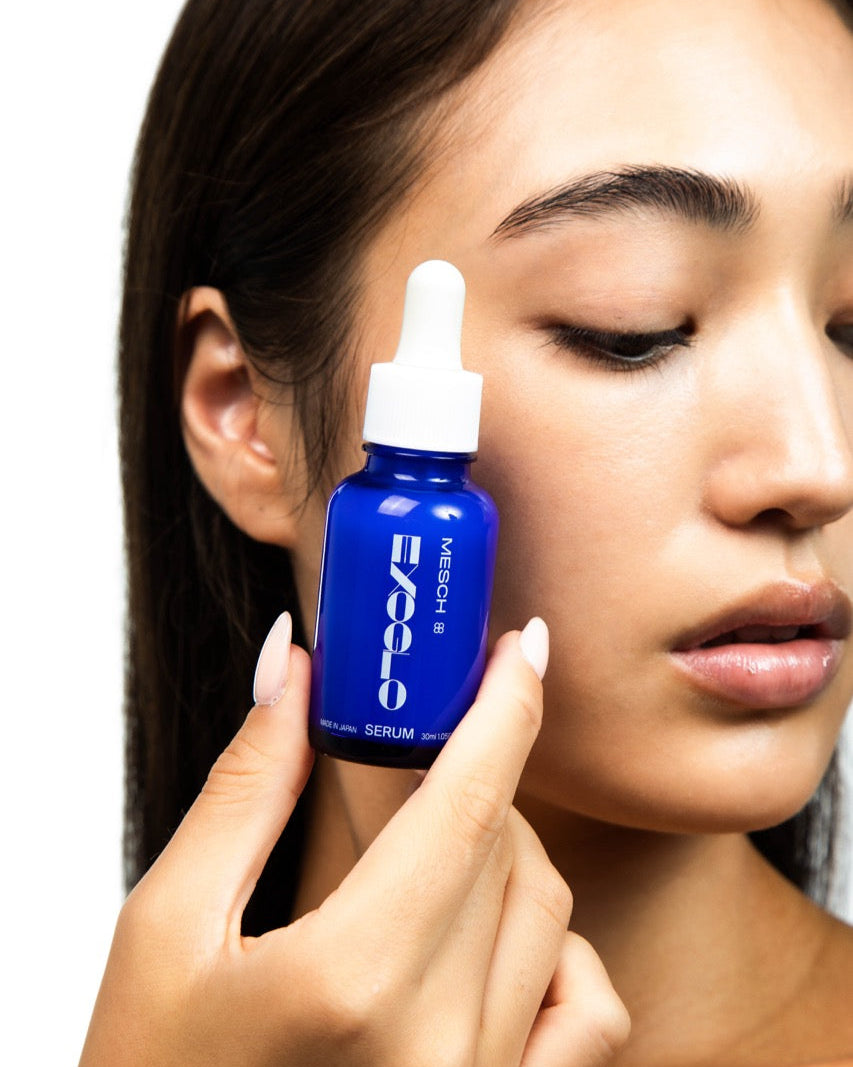
Leave a comment